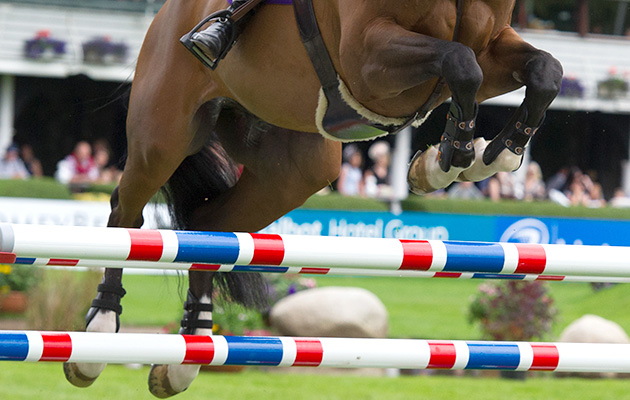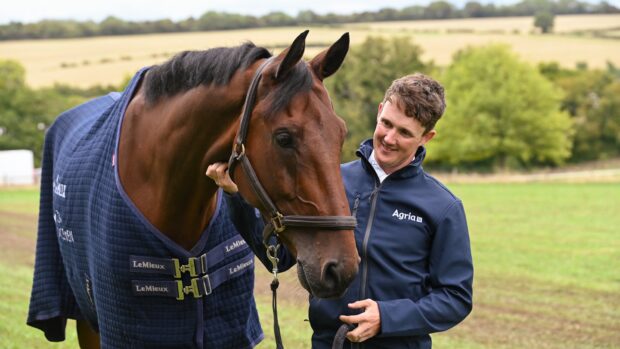Sponsorship is getting increasingly difficult to secure for riders at all levels. Rhea Freeman investigates what sponsors are looking for and what would cause them to terminate a contract
Sponsorship is getting increasingly difficult to secure for riders at all levels. Whether you’re competing at four-star or just starting to make your way up the grades, sponsorship and its allocation to you relies on many things. It’s not just how good you are in the saddle. A blend of social media prowess, what else you can offer the company and your character are factors too. And, more than this, when the sponsorship is secured, that’s just the start.
Over the years, we’ve seen many brands ‘drop’ riders for various reasons. Sometimes a contract or agreed time simply expires and is not renewed. In other cases something happens and the company is forced into making a decision one way or another. Sometimes, the company may come out in support of a rider, but often they’ll go quiet and wait for the storm to pass or, depending on the ‘severity’ of the issue and/or how this aligns with the brand’s values and customers, they may decide to walk away.
It’s not just how a rider or equestrian behaves in his or her professional career that can cause a parting of the ways. Incidences that are deemed socially unacceptable or illegal can also cause an agreement to terminate, as can a breach of contract.
Marta Kotonska is the managing director of fast-growing brand Eqclusive and supports a number of riders and grooms.
“For us, loyalty is important as is work ethic. We expect our sponsored team to use our products, to wear appropriate branded clothing and be an active part of what we’re doing to promote our brand. These are all written into the contract we sign with the sponsored person before we start. We have a lot people who are incredibly keen to work with us so we have a framework to give people the opportunities to do this.”
As for more serious matters, that’s written into the contract too.
“We have a specific clause stating that we can drop a rider banned by FEI, involved with doping or not fulfilling the clauses above. Luckily we have never had to do this. We came close once, but after a very honest conversation we managed to move forward, and we’re really pleased we did.”
For Annabel Brocks, managing director of Annabel Brocks and Hawkins Organic, welfare also remains at the forefront of her mind.
“For any riders we sponsor, one of the most important things to me is welfare and care of their horses and not just what you see in the public eye. We normally spend quite a lot of time with riders before becoming associated with them to ensure this and it’s a real deal breaker for us.
“We wouldn’t work with anyone who we felt was negligent in any area and would have no issue in terminating an agreement if an incident was reviewed and we felt it was detrimental to our brand. We’re very fair and appreciate there’s two sides to every story, but welfare is essential to what we do and what we believe.”
There’s so many aspects to sponsorship and with social media becoming a bigger and bigger part in many brands’ marketing strategies, the response on social media to a particular event can definitely influence a decision too. Sponsored riders, in addition to all of the above, are selected because the attributes they possess either echo or complement a brand’s, and the reach that that person has, to people with shared views, can be hugely valuable. If something happens to compromise this, whether it’s a welfare issue, being banned, doing something illegal or frowned upon, brands will review how to move forward.
Article continues below…
You might also be interested in:

Could you be an equestrian brand ambassador?
Equestrian PR and marketing consultant Rhea Freeman offers her advice about becoming a brand ambassador — and making the most

Subscribe to Horse & Hound magazine today – and enjoy unlimited website access all year round
If something does start to go south, burying your head in the sand is not the best option. Being open and honest, and keeping the lines of communication open is, often, the very best chance of either maintaining a sponsorship or, at the very least, parting on the best terms possible.
The cost implications when a brand decides to support a rider are one thing, but the damage that can be done to a brand if the rider no longer aligns with their customers can cost a lot more, and this is something many brands will consider before parting ways with a rider.
Would you like to read Horse & Hound’s independent journalism without any adverts? Join Horse & Hound Plus today and you can read all articles on HorseandHound.co.uk completely ad-free.



